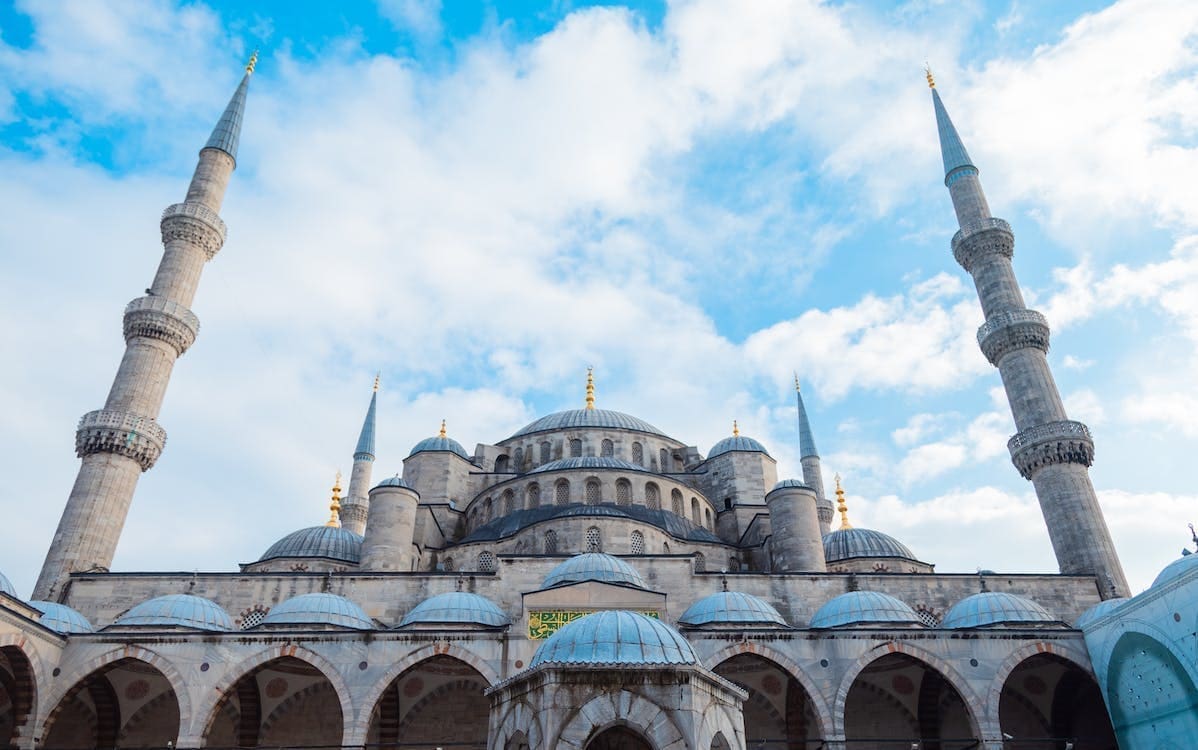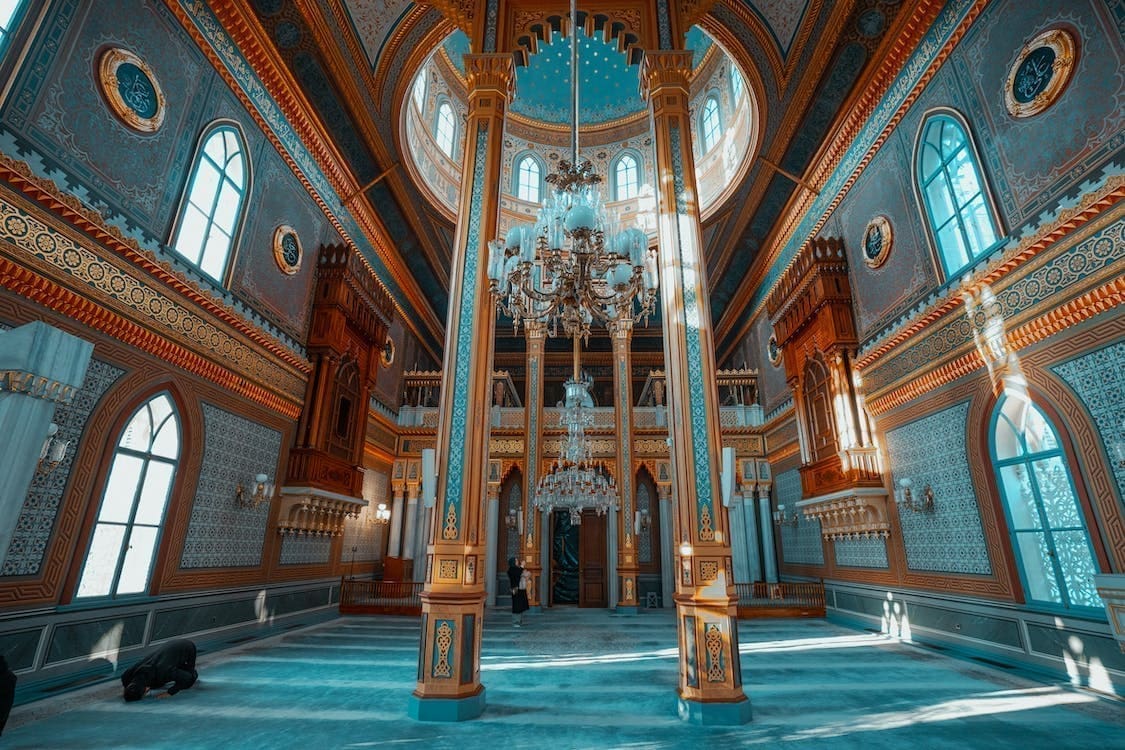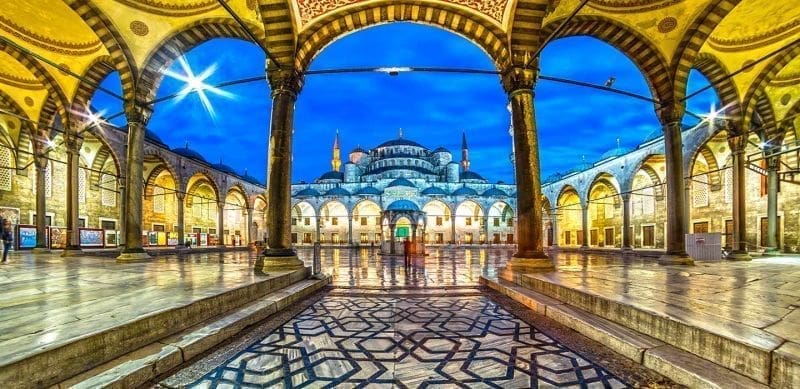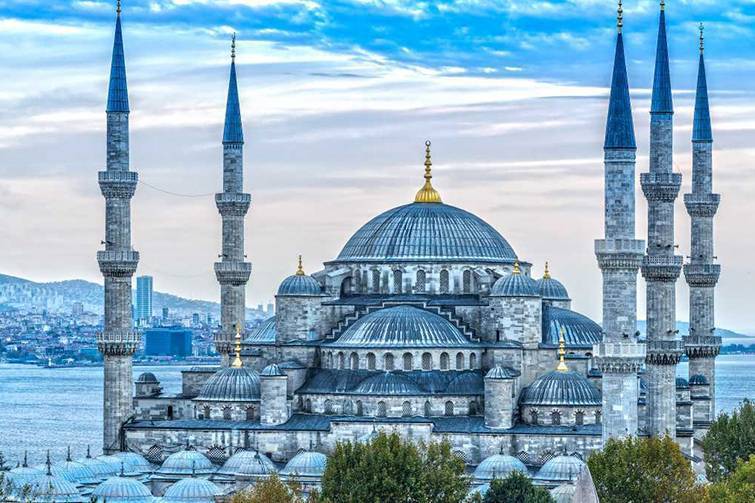Known locally as the Sultan Ahmed Mosque (Sultan Ahmet Camii), and internationally renowned as The Blue Mosque, this architectural masterpiece is undoubtedly one of Istanbul’s crowning glories. Commissioned by Sultan Ahmed I, this mosque is an iconic symbol of Turkish heritage and an integral part of Istanbul’s cultural landscape.

Situated in the bustling Sultanahmet Square, the Blue Mosque stands opposite the legendary Hagia Sophia, another remarkable historical monument that transitioned from a mosque to a museum and is now restored to its original purpose. The Blue Mosque’s distinctive architecture has carved its reputation as one of the Islamic world’s largest and most significant mosques.
Completed between 1609 AD – 1616 AD (1018 AH – 1026 AH), as per inscriptions on one of its doors, the mosque boasts the genius of Mehmet Agha, one of Turkey’s most revered architects following Sinan Pasha and Daoud Agha. The mosque lies south of Hagia Sophia and east of the ancient Byzantine Racecourse, encompassed by a high wall on three sides. Five doors punctuate this wall, three leading to the mosque’s courtyard and two opening into the prayer hall.

The courtyard is a spacious open area, graced with a hexagonal basin elevated on six columns. Showcasing Persian artistic influences, the grandest doors lead to this courtyard. Sedefkâr Mehmed Ağa, an Ottoman architect and student of Mimar Sinan, played a pivotal role in shaping the mosque’s grandeur and splendor.
Externally, the mosque displays an awe-inspiring design with five main large domes, six minarets, and eight smaller domes, a testament to two centuries of Ottoman expertise in mosque construction. The architecture harmoniously blends Byzantine Christian elements, inspired by the neighboring Hagia Sophia, with traditional Islamic architecture, marking it as the final masterpiece of classical Ottoman architecture.
Internally, the mosque features a rectangular layout, stretching 64 m by 72 m. A large central dome, flanked by four semi-domes, dominates the interior, while smaller domes envelop each corner of the mosque. An abundance of windows infuses the interior with natural light. Reachable by the T1 “Bagcilar-Kaptas” tramway, with a short five-minute stroll from the “Sultanahmet” station, the Sultan Ahmed Mosque is conveniently located for visitors.

A unique feature of the Blue Mosque is its six minarets, a characteristic shared only by three other mosques in Turkey. Initially, these minarets sparked controversy due to their similarity to the Grand Mosque in Mecca.
Sultan Ahmed resolved this by ordering a seventh minaret for the Grand Mosque, ensuring that his mosque remained the only six-minaret mosque in Istanbul and Turkey (at the time of its construction), while the Grand Mosque stood alone with seven minarets.
Interestingly, an amusing anecdote suggests a linguistic misunderstanding led to the construction of six minarets. Sultan Ahmed allegedly instructed his Prime Minister to construct a minaret of pure gold (altın in Turkish), but the Prime Minister misheard it as altı (Turkish for six), leading to six minarets instead of a golden one.

The three other Turkish mosques with six minarets are the Sabanci Central Mosque in Adana, Hazrat Miqdad Mosque in Mersin’s Yenişehir region, and Çamlıca Mosque in Istanbul’s Uskudar district.

